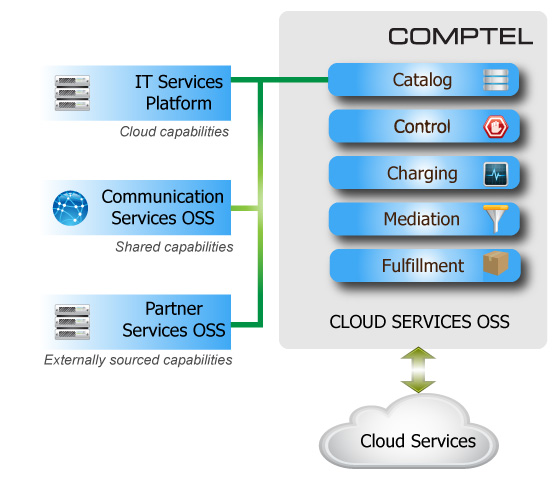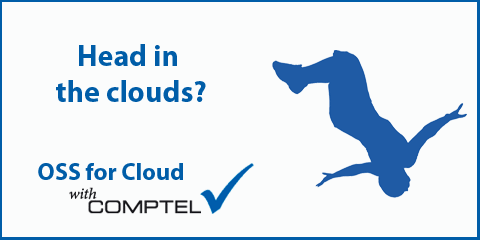
article page |
1 |
2 |
3
- Catalog capability to manage a range of customer products and to federate service elements drawn both from within the business, and from partners (who may be providing some if not all of the IT service capability)
- Automated fulfillment to support efficient and consistent service delivery – vital in the relatively standardized small-to-medium-sized business market (SMBs)
- Real time charging and policy control to support a flexible, pay-as-you-go business model and respond quickly to customer events
- Partner interaction – for settlement, back-to-back SLA assurance and communications
- Analytics, providing vital decision support in an emerging and volatile business sector
|
|
The challenge for telcos is to create an efficient and integrated platform for the delivery of Cloud services... |
|

For operators, it will also be critical to blend in communications elements, such as voice services and equipment, VPN or fixed wire capability and guaranteed access service levels, across multiple networks.
Being able to create standard packaged offerings from elements of this kind will be vital to maintaining viable profit margins, particularly in the SME market, which is promising in terms of size, but likely be highly competitive.
A key enabler will be ‘catalog’ technology that will allow service elements and products to be defined in isolation from the OSS that directly supports them. A technical catalog with interfaces to the IT and
|
|
|
|
|

... and how does it work in the real world?
So how would the Cloud services platform look in practice? There are three key aspects to consider: offline, online and transaction-driven.
1. Support in offline mode
Cloud service providers must be able to create, change and adapt marketable products quickly, responding to competitor initiatives and getting new customer propositions to market fast.
It would be a mistake to think that Cloud propositions will be simple or easily defined. They are likely to require the blending of multiple components, with a high probability that at least some will be provided by partners. These could include, for example, storage and bandwidth allocation, applications, support service levels, possibly even IT and communications equipment and other peripherals. They will also need to recognize various pricing models, thresholds and other commercial characteristics.
|
|

communications-supporting OSS will provide a product creation environment capable of modelling all relevant capability from within the CSP’s domain and from partner domains. Catalog solutions can also work in the opposite direction, acting as a high level orchestrator of complex service orders, managing the sequence of activities and the dependencies between the various operational systems required to directly enable the Cloud elements.
2. Support in transaction-driven mode
Rapidly fulfilling customer orders and change requests with the minimum of human intervention will be vital to ensure profitable Cloud service provision, as will collecting usage records for billing, settlement and other analytical processes.
Efficient order processing in particular – being able to fulfil Cloud services in as close to real time as possible – will be a vital contributor to the kind of customer experience which will ensure a long-term and high margin customer relationship.
|
|

Integrated OSS for Cloud Services
|
|






